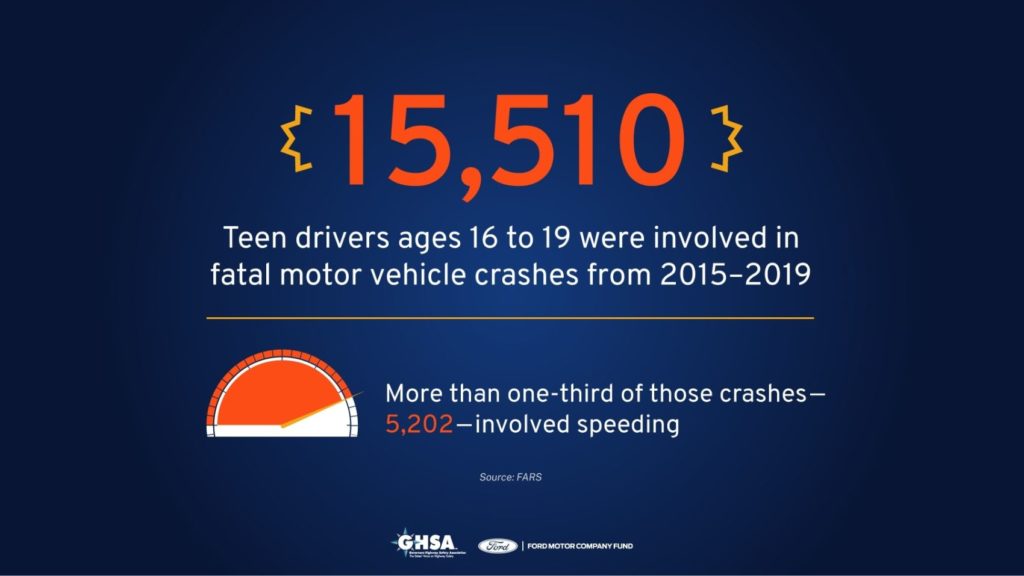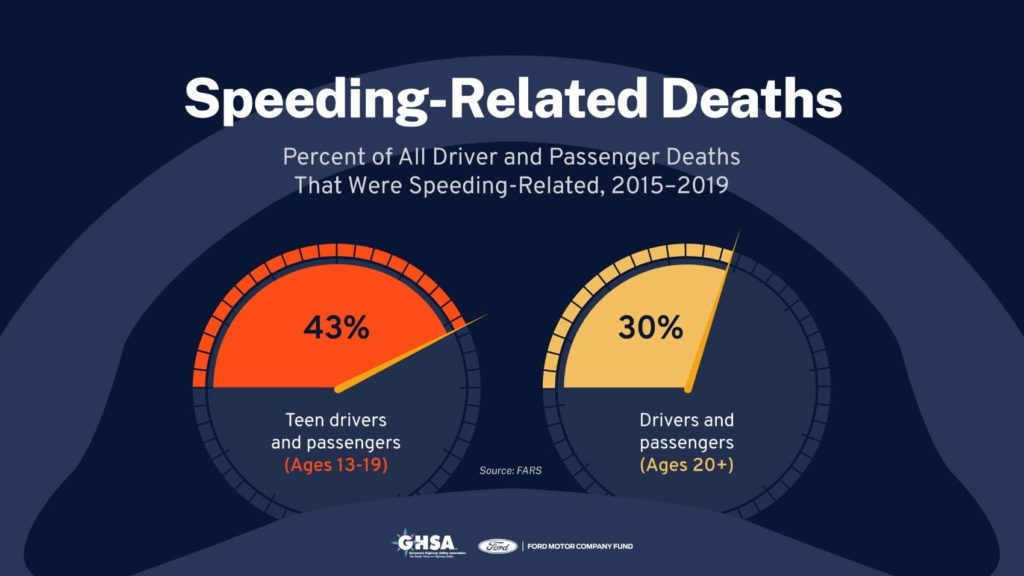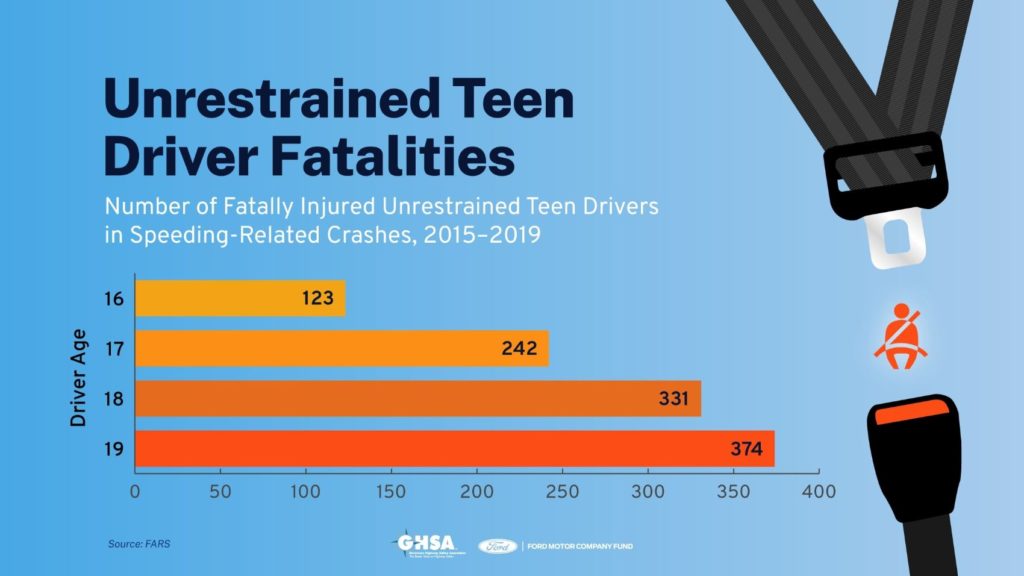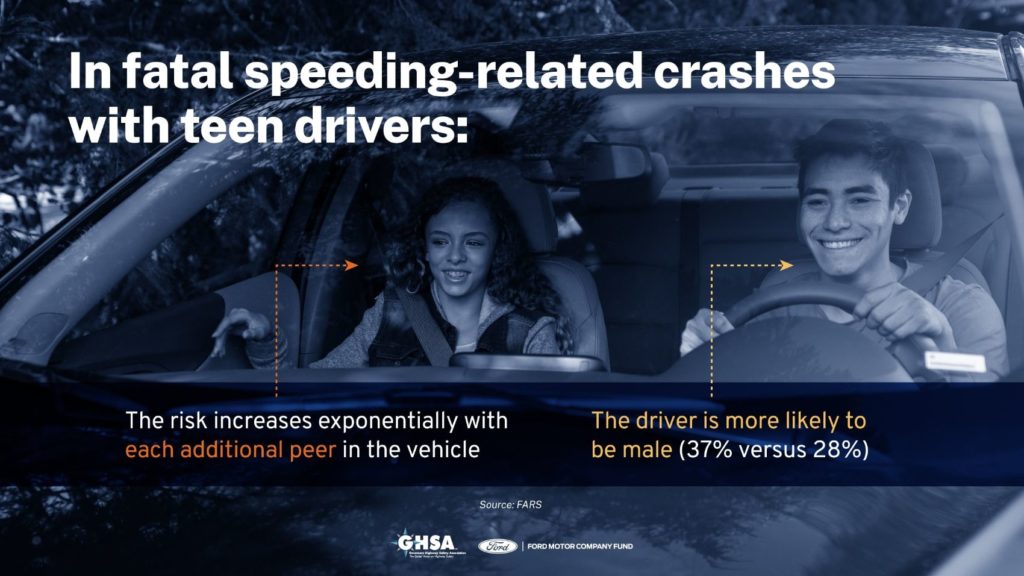The Governors Highway Safety Association (GHSA) and the Ford Motor Company Fund have completed a comprehensive report on the relationship between speeding and teenage drivers in the United States. The report, Teens and Speeding: Breaking the Deadly Cycle, includes state-by-state statistics along with tools and advice to help parents keep their young drivers safe.
According to the report, speeding is the leading cause of death for teenagers living in the U.S.
Key Findings
Between 2015 and 2019, the GHSA report determined that teen drivers (identified between 16 and 19 years of age) accounted for a more significant proportion of speeding-related fatalities (43 percent) than all other age groups at 30 percent. During those five years, the GHSA report found that nearly 5,000 teen drivers and passengers died in speeding-related crashes.
The GHSA report cites further research from the Centers for Disease Control and Prevention and the Insurance Institute for Highway Safety (IIHS). That data collectively shows how motor vehicle crashes remain the leading cause of death for American teenagers. The fatal crash rate per mile driven for 16- and 17-year-olds is about three times the rate for drivers 20 and older. Based on police-reported crashes of all severities, the crash rate for 16- to 19-year-olds is nearly four times the rate for drivers 20 and older. Risk is highest at age 16, the GHSA report concluded.
According to the data analysis, conducted by Richard Retting of Sam Schwartz Consulting, the driver in a speeding-related fatal crash is more likely to be male and more likely not to be wearing their seatbelt. The report noted the link between speeding and fatal rollovers and run-off road crashes. It also concluded that risk factors for teenagers, such as speeding, increase exponentially with each additional passenger in the vehicle.
COVID-19 & Roadway Safety
Motor vehicle deaths have held around 40,000 since 2016, according to the National Safety Council (NSC). Although quarantines have reduced traffic and overall miles traveled, the number of fatal accidents has not decreased. The NSC and its partners describe this latest trend as a “dark picture of the state of safety on our nation’s roadways,” and are encouraging citizens to sign a petition urging President Joe Biden’s administration to take action.
“Our country has a speeding problem that has only worsened during the COVID-19 pandemic,” said GHSA Executive Director Jonathan Adkins. “The data tell us that teen drivers are the most likely to be tempted to speed, so the need to address this issue is more critical than ever given traffic death trends during the pandemic.”
According to the latest Preliminary Monthly Estimates (November 2020) from the NSC, November motor-vehicle deaths are up nine percent versus November 2019. Based on this data from the NSC, November 2020 marks the sixth consecutive monthly increase following three straight months of decrease during the pandemic. According to the NSC, the increasing deaths combined with the large decrease in miles driven results in a monthly mileage death rate increase of 23 percent compared to November 2019.
The Michigan State Police have shared with Automoblog (the sister publication of AutoVision News) that serious crashes can (and do) happen on bright, sunny days when visibility is excellent. These clear, sunny days may lead to “zoning out,” especially if a particular road is familiar. This autopilot-like behavior means drivers are less likely to notice their speed or other road users – and their risk of an accident increases considerably as a result. With fewer cars on the road during a quarantine, it’s easy to see how drivers, especially teenagers, could easily dismiss speeding as being dangerous.
“Thousands of people die needlessly on our roads because some drivers mistakenly think less traffic means they can speed and nothing bad will happen,” Adkins added.
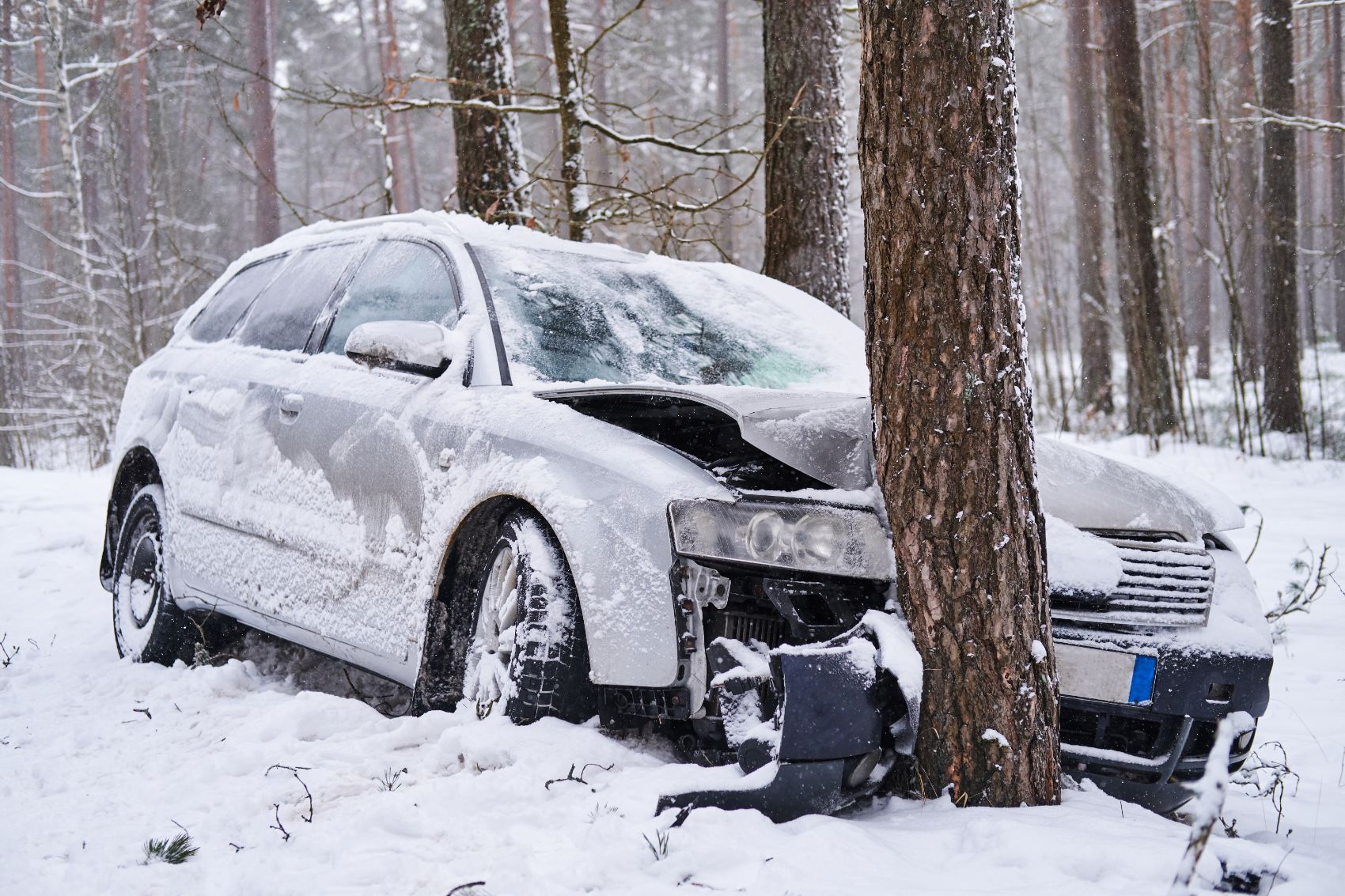
Explanations & Causes
The GHSA report includes several cognitive-based explanations, citing different bodies of research, for why teenagers are at a higher risk for speeding. Lack of maturity and experience behind the wheel, combined with how the human brain isn’t fully developed until after our teenage years, may lead younger drivers to be more impulsive and erratic. Any negative consequences that might arise are an afterthought, which may explain why observational studies show the tendency for teenage drivers to speed or ride too closely to the vehicle in front of them.
Conversely, even careful and cautious teenagers may find themselves overwhelmed when assessing and navigating a busy roadway. Teenage drivers may find it difficult to accelerate, brake, or steer according to the situation at hand versus an older, more seasoned driver.
These cognitive-based explanations also have a policy-based component, such as the gradual raising of speed limits over the years. Safety experts share the view that such action has sent the wrong message: that driving fast is okay and socially acceptable. A 2019 IIHS study found that speed limit increases have resulted in nearly 37,000 lives lost over the last 25 years. The IIHS is, as a result, urging policymakers to consider studies like this before implementing speed limit changes. Those 2019 findings are reinforced by a more recent crash test study conducted by the IIHS, the AAA Foundation for Traffic Safety, and Humanetics.
“Higher speed limits cancel out the benefits of vehicle safety improvements like airbags and improved structural designs,” explained Dr. David Harkey, IIHS president. “The faster a driver is going before a crash, the less likely it is that they’ll be able to get down to a survivable speed even if they have a chance to brake before impact.”
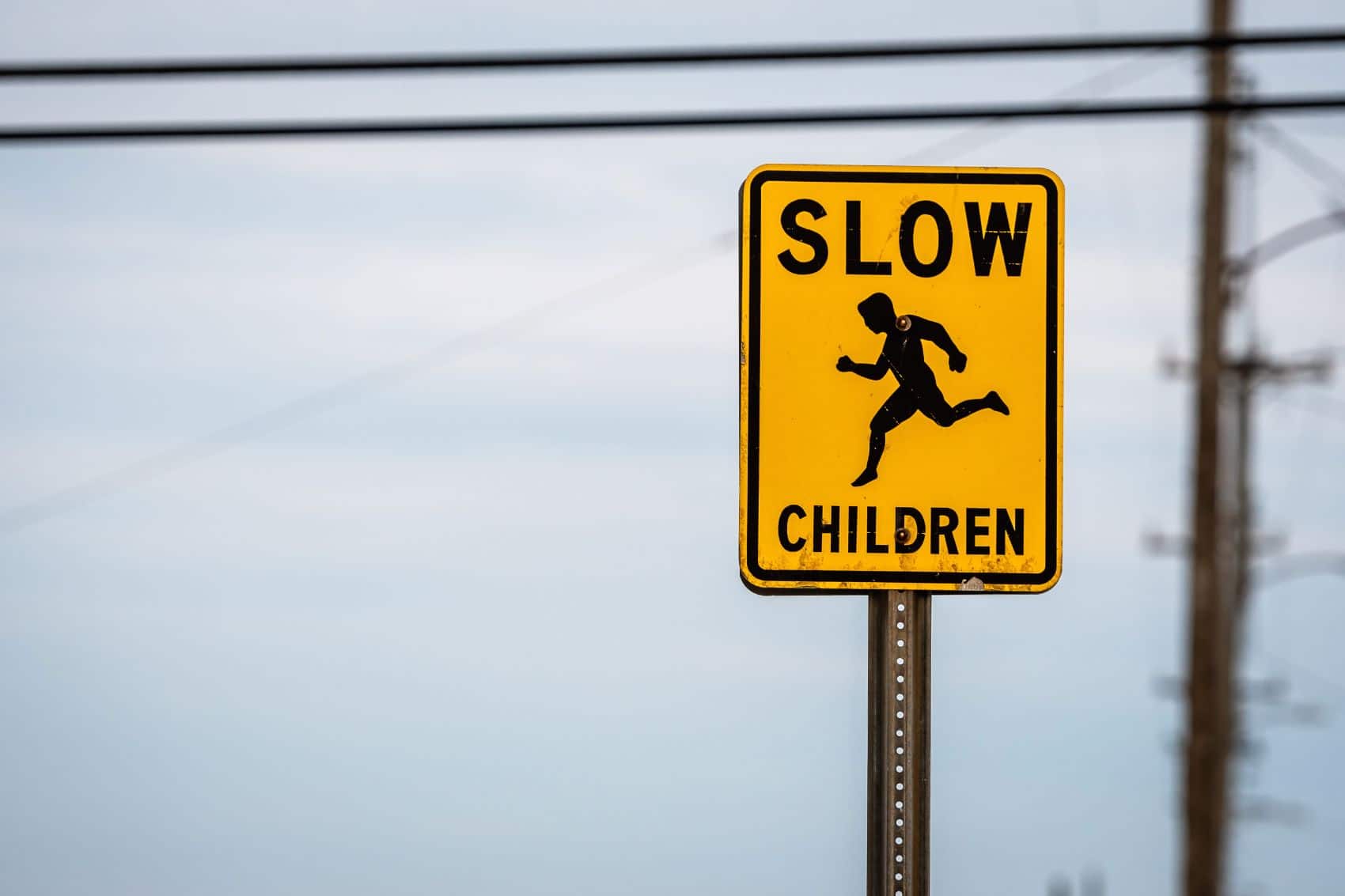
ADAS Technology & Smartphone Apps
The GHSA report covers things parents and families can do to help keep their younger drivers safe. Along with driver education and training and setting a good example through safe driving behavior at home, the GHSA report provides insight into some of the latest technology available to parents, either through the OEM or by way of aftermarket devices.
Systems like Chevy’s TeenDriver Technology, Ford’s MyKey, and Volvo’s Care Key are detailed in the report. Parents can configure these systems to limit the top speed, or issue a continuous warning alert for seat belt usage, even having the audio mute until the occupants are buckled up. The report also outlines several popular smartphone tracking apps, including Life360, Hyundai Blue Link, and Bouncie. Each app provides parents with real-time insights into how their teenagers drive.
The GHSA report also suggests that parents consider a vehicle with the latest ADAS technology. (The authors are careful to note that such innovations are designed to support an already safe driver and should not be considered a substitute). Among the ADAS technologies listed are lane-keeping assist, automatic emergency braking, adaptive or intelligent cruise control, and speed sign recognition.
“Safety technologies can serve as guardrails to remind teens in real-time when their driving actions or decisions are putting them at risk,” the authors of the report write. “It also is important for parents to learn how their vehicle’s safety features work and to convey this information to their teen drivers. This goes for smartphone apps, as well. But most importantly, parents should regularly reinforce with their teens that a safe driver is a vehicle’s most important and effective safety feature.”
“Speed management continues to be a key component of our training and this report reaffirms its importance,” added Jim Graham, Ford Motor Company Fund Manager. “Teens don’t see speeding as a serious problem and parents likely don’t recognize how rampant it is for novice drivers, so teaching them about the impact is critical.”
More Information
A PDF version of the GHSA report can be found here. Additional downloadable infographics from GHSA are available below. While not stated explicitly in the GHSA report, there is a growing consensus in the industry that advanced in-cabin monitoring systems can play a role in reducing traffic deaths.
